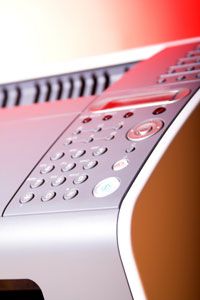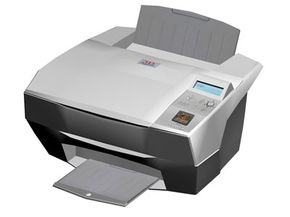Is working next to a printer as bad as inhaling secondhand smoke? A study by researchers at Queensland University of Technology's Air Quality and Health Program says that might be the case.
The Australian research team tested 62 recent laser-printer models from Canon, HP LaserJet, Ricoh and Toshiba in order to measure the levels of emissions they produced. Researchers tested the printers in an open-plan office, the sort of floor plan found in many offices around the world, and in a controlled chamber.
Advertisement
The tests showed that some printers emitted tiny bits of toner in the form of ultrafine particles (UFPs). These particles can penetrate into the lungs and, the study's authors say, lead to respiratory complications, cardiovascular problems and cancer. Dr. Lidia Morawska, the study's lead researcher, and her coauthors compared the health effects to those from cigarettes. The researchers fear that these UFPs may contain carcinogens [Source: ZDNet].
Printers were assigned to categories based on level of UFP emissions: non-emitter (37), low-level emitter (six), medium-level emitter (two) or high-level emitter (17). Twelve of the high-level emitters were HP printers. Though they're similar in design, photocopiers produced no emissions.
In the open-plan office test, airborne particles increased 500 percent during the workday [Source: BBC News]. Researchers also found that emissions levels were elevated even when printers were on standby. New cartridges and print jobs requiring lots of ink (such as images) produced more emissions.
Soon after Dr. Morawska and her team published their study in Environmental Science & Technology, a publication of the American Chemical Society, HP released an official statement, criticizing the study and its claims. HP said that they "do not believe there is a link between printer emissions and any public health risk" [Source: HP]. They did acknowledge that "ultrafine, fine and coarse particles are emitted from printing systems" but said they were "below recognized occupational exposure limits" [Source: HP]. The company also said that it performs rigorous testing and adheres to guidelines from more than one environmental organization.
Before we look at what others are saying about the study, let's take a closer look at what the researchers were concerned about: ultrafine particles and printer toner. UFPs are tiny particles, less than 0.1 micrometer in size -- or 1/1000th the size of a normal dust particle. The EPA and other organizations are performing research on UFPs, some of it related to concerns about possible health effects from nanotechnology. The small size of UFPs allows them to penetrate into human alveoli, the sacs inside our lungs. Once inside, their ability to do harm depends on their chemical composition. That's where printer toner comes in.
Toner is the ink used by laser printers. It's different from the ink found in inkjet printers. Laser toner is made up of a dry, ultrafine powder, which has a positive electrical charge so that it sticks to the printer's drum. Laser toner also contains a compound called carbon black, which the International Agency for Research on Cancer (IARC) calls a Class 2B carcinogen [Source: IARC]. By the IARC's standards, that means that carbon black is "possibly" carcinogenic to humans. The IARC tests show that "sufficient evidence" exists to show that carbon black is carcinogenic to animals, while "inadequate evidence" exists to prove that it's carcinogenic to humans [Source: IARC].
So if carbon black is possibly carcinogenic to humans and is found in laser toner, does that mean that it's in UFPs produced by laser printers? And, in turn, should we be worried about the health effects of those UFPs? On the next page, we'll look at what we know and don't know about laser-printer emissions.
Advertisement

